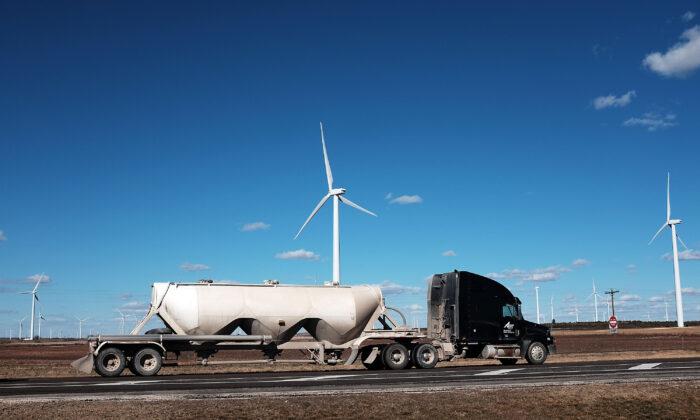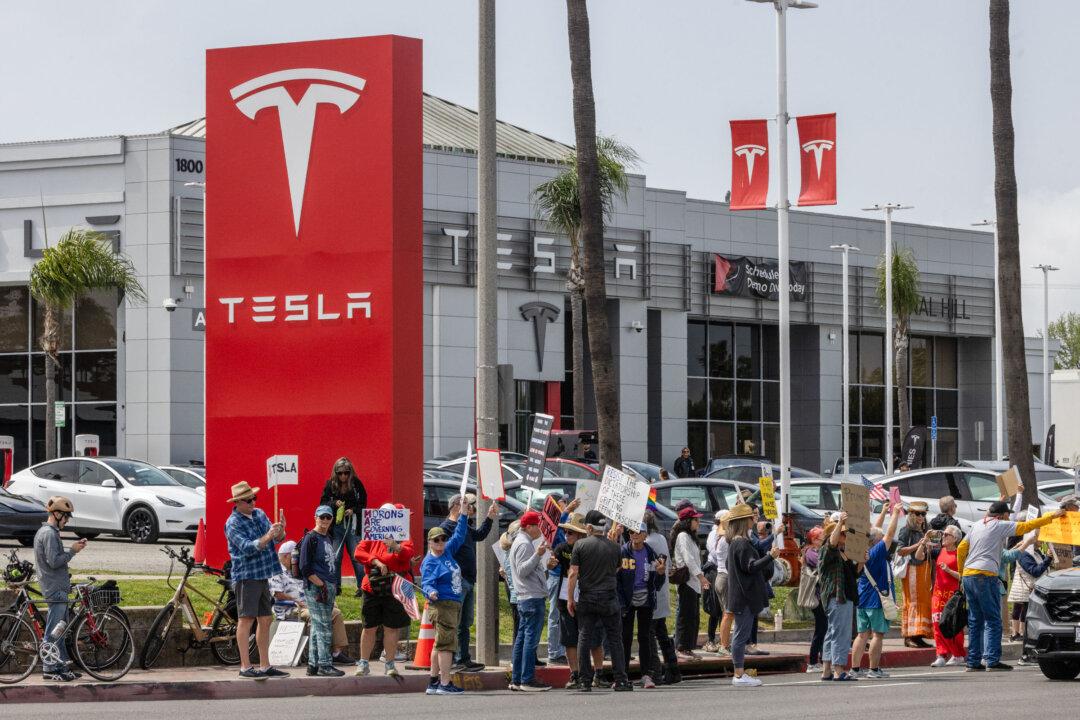America’s increasing reliance on intermittent power sources and batteries is creating novel risks, according to grid specialists who testified before Congress on July 18.
Many of the greatest among them emanate from a key geopolitical rival, China.
That’s partly because the new technologies frequently use inverters. When solar panels, wind turbines, and battery systems generate or store direct current electricity, inverters turn it into the alternating current electricity that flows through the grid.
Paul N. Stockton, a senior fellow at Johns Hopkins University’s Applied Physics Laboratory, opened what he called a “rabbit hole” in response to a question on inverters during the House Energy & Commerce hearing.
“Do we have a satisfactory supply of inverters for all of the renewable energy that’s being brought into the grid?” Rep. Michael Burgess (R-Texas) asked Mr. Stockton, who also holds positions on subcommittees in the Department of Defense and the Department of Energy.
“Manufacturers in China are important producers of inverters being deployed nationwide, across the United States,” Mr. Stockton responded.
He explained that the country’s reliance on Chinese inverters could jeopardize grid security.
Solar Panels With Parts From China
The United States’ use of solar panels with parts from China that are assembled in Southeast Asia has been a source of controversy in this Congress. President Joe Biden vetoed a bill that would have ended his temporary pause on tariffs affecting those panels.In his written testimony, Mr. Stockton elaborated on the ways inverter-based resources “provide China with new opportunities to disrupt the grid.”
“I propose that we prioritize our efforts to prevent Chinese leaders from accomplishing their goals in attacking the grid,” Mr. Stockton wrote.
He noted that inverter-based resources have some advantages, testifying in writing that they “have provided reliable, much-needed power during the 2023 heat domes and other extreme events.”
“Yet, they are also prone to catastrophic failures that can put the grid at risk.”
Rep. Kathy Castor (D-Fla.) also asked Mr. Stockton about inverter-related vulnerabilities facing the United States.
Mr. Stockton offered a central recommendation to the lawmakers in attendance:
“Above all, ensuring that at the level of the devices, we hold manufacturers’ feet to the fire and ensure the adoption of safe and secure inverters, instead of relying on individual utilities or energy aggregators or other entities within the larger electric system to do their own homework.”
Yet, he and Mr. Stockton offered contrasting perspectives on the decentralization that could be afforded by the rise of wind and solar.
Mr. Stockton argued in written testimony that decentralization could make the grid “more difficult to disrupt than today’s version, which relies on a small number of critical, high-value assets that adversaries can selectively target.”
Mr. Walker, on the other hand, testified that decentralization “has increased the surface area for cyber penetration.”
Manny Cancel, CEO of the North American Electric Reliability Corporation (NERC), named China alongside Russia, Iran, and North Korea as foreign adversaries that could threaten the United States’ grid.
More Threats From China or Russia?
“Are you seeing more threats from China or Russia?” Rep. Cathy McMorris Rodgers (R-W.Va.) asked Mr. Cancel.“Probably China right now, but it’s not consistent,” Mr. Cancel replied, adding that Russia is a “very complex adversary.”
The grid experts’ concerns weren’t limited to the threat from China and other rivals on the world stage.
“The accelerating decarbonization and retirement of coal generation is forcing the United States toward an electric generation fleet reliant upon natural gas pipelines, further increasing the electric sector’s cyber and physical attack surface area,” Mr. Walker testified.
One of the most high-profile attacks on America’s energy infrastructure targeted a similar system, the Colonial Pipeline for jet fuel and gasoline.
Rep. Morgan Griffith (R-Va.) asked Mr. Walker if he favored more reliance on coal over improvements to pipeline security as a strategy for mitigating such threats.
“I actually advocate for an all-of-the-above approach,” he told the lawmaker.
America’s emerging electric vehicle (EV) infrastructure, including existing and planned charging stations, was another recurring topic.
In his written testimony, Mr. Stockton observed that EVs open up more space for internet-managed “demand-side management”—in other words, policies and technologies designed to influence consumer behavior—“on a massive scale.”
“These same capabilities are opening the door to unprecedented opportunities to manipulate demand for power, and exacerbate rather than remedy grid instabilities,” Mr. Stockton added.
In response to questioning from Mr. Griffith, Sam Chanoski of the Idaho National Laboratory sounded more optimistic about the cybersecurity of EV charging infrastructure, based on testing at his facility and other national laboratories. He told the lawmaker that the results were on par with “any other product.”
“There is not a digital product that is invulnerable,” he said.





